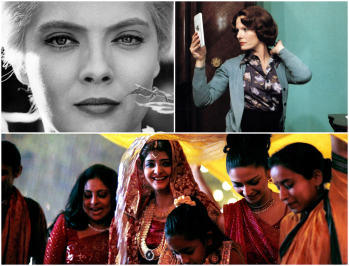The Role of Women in Japanese Cinema: Iconic Female Directors and Actresses
Japanese cinema has a rich history, renowned for its unique storytelling, aesthetic beauty, and profound cultural reflections. While much of the spotlight has historically been on male directors and actors, women have played a crucial role in shaping the industry. From pioneering female directors who broke barriers to actresses whose performances have captivated audiences, the contributions of women in Japanese cinema are both significant and inspiring. This post explores the roles of these iconic female figures, their impact on the industry, and the challenges they have faced along the way.
1. Pioneering Female Directors in Japanese Cinema
While the Japanese film industry has been traditionally male-dominated, several female directors have made groundbreaking contributions, offering fresh perspectives and narratives that challenge societal norms.
- Kinuyo Tanaka: One of the first female directors in Japan, Kinuyo Tanaka was already a celebrated actress before stepping behind the camera. Her directorial debut, Love Letter (1953), marked a significant moment in Japanese cinema, as it addressed post-war social issues through a woman’s lens. Tanaka’s films often focused on the struggles and resilience of women, making her a pioneering figure in feminist cinema in Japan.
- Naomi Kawase: Known for her contemplative and poetic style, Naomi Kawase is one of the most internationally recognized Japanese directors today. Her films, such as Suzaku (1997) and The Mourning Forest (2007), explore themes of memory, nature, and human connection, often from a deeply personal and feminine perspective. Kawase’s work has been celebrated at major film festivals, highlighting the global impact of female directors in Japan.

Why It Matters:
These directors have not only paved the way for future generations of female filmmakers but have also enriched Japanese cinema with stories that reflect the complexities of women’s experiences.
2. Iconic Japanese Actresses Who Shaped the Industry
Japanese cinema boasts a long list of talented actresses whose performances have left a lasting impact. These women have portrayed a wide range of characters, from traditional roles to modern, complex figures, reflecting the evolving status of women in Japanese society.
- Setsuko Hara: Often referred to as the “Eternal Virgin” of Japanese cinema, Setsuko Hara was a favorite of director Yasujiro Ozu, starring in many of his most famous films, including Tokyo Story (1953) and Late Spring (1949). Hara’s ability to convey deep emotion with subtlety made her one of Japan’s most beloved actresses, and her roles often embodied the tensions between duty and personal happiness in post-war Japan.
- Hideko Takamine: With a career spanning five decades, Hideko Takamine was one of Japan’s most versatile actresses. Known for her roles in films like Twenty-Four Eyes (1954) and When a Woman Ascends the Stairs (1960), Takamine often portrayed strong, independent women navigating the challenges of a rapidly changing society. Her performances are celebrated for their emotional depth and complexity.
Why It Matters:
These actresses brought to life the stories of Japanese women, often challenging traditional gender roles and reflecting the societal changes of their times. Their legacy continues to influence contemporary Japanese cinema.
3. The Evolution of Female Roles in Japanese Cinema
Over the decades, the portrayal of women in Japanese cinema has evolved, reflecting broader societal changes. From the idealized, sacrificial figures of the post-war period to the more complex, independent characters of modern films, Japanese cinema offers a fascinating lens through which to view the changing status of women in Japan.
- Post-War Cinema: In the immediate post-war period, films often depicted women as symbols of purity, resilience, and sacrifice. Directors like Ozu and Mizoguchi frequently explored the tensions faced by women between traditional roles and the pressures of modern life.
- Modern Cinema: In recent years, Japanese cinema has seen an increase in films that portray women as multifaceted characters, grappling with issues such as identity, career, and personal autonomy. Directors like Mika Ninagawa (Sakuran, Helter Skelter) and Miwa Nishikawa (Dear Doctor, The Long Excuse) have contributed to this shift, offering stories that resonate with contemporary audiences.
Why It Matters:
The evolution of female roles in Japanese cinema mirrors the broader social changes in Japan, offering insight into the shifting dynamics of gender, family, and society.
4. Challenges Faced by Women in the Japanese Film Industry
Despite their contributions, women in the Japanese film industry have faced significant challenges, including limited opportunities, gender bias, and societal expectations. Female directors, in particular, have had to navigate a male-dominated industry that often marginalizes women’s voices.
- Limited Opportunities: Historically, female directors in Japan have had fewer opportunities to direct films compared to their male counterparts. However, in recent years, there has been a slow but steady increase in the number of women behind the camera.
- Gender Bias: Like many industries, the Japanese film industry has been plagued by gender bias, with women often typecast into specific roles or overlooked for leading parts in favor of male actors. This bias extends to the recognition of their work, where female contributions are sometimes undervalued or ignored.
Why It Matters:
Addressing these challenges is crucial for fostering a more inclusive and diverse film industry in Japan, where women can fully express their creative potential and tell the stories that matter to them.
5. The Future of Women in Japanese Cinema
Looking ahead, the future of women in Japanese cinema is promising. With a new generation of female directors and actresses emerging, the industry is slowly but surely becoming more inclusive. Films that explore women’s perspectives are gaining recognition, both in Japan and internationally, suggesting that the voices of women in Japanese cinema will continue to grow stronger.
- Emerging Talent: Directors like Hana Matsumoto and actresses like Sakura Ando are among the new wave of talent making their mark on Japanese cinema. Their work reflects the diversity and complexity of contemporary Japanese society, offering fresh perspectives and innovative storytelling.
Why It Matters:
The continued rise of female talent in Japanese cinema signals a shift towards a more balanced and representative industry, where women’s voices and stories are increasingly valued and celebrated.
Conclusion
The role of women in Japanese cinema is both rich and complex, with a history of groundbreaking contributions from directors and actresses alike. While challenges remain, the influence of these women on the industry is undeniable, offering powerful narratives that reflect the changing status of women in Japan. As the industry evolves, the voices of female filmmakers and performers will continue to shape the future of Japanese cinema, ensuring that women’s stories remain at the forefront of this dynamic art form.



